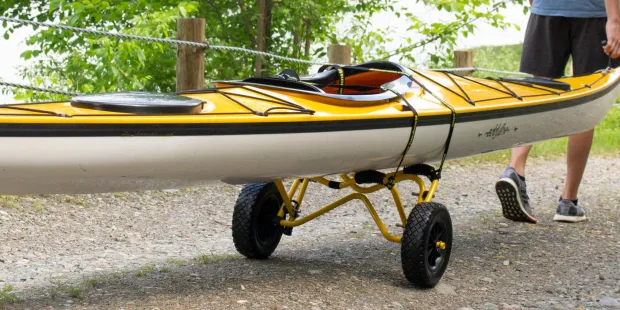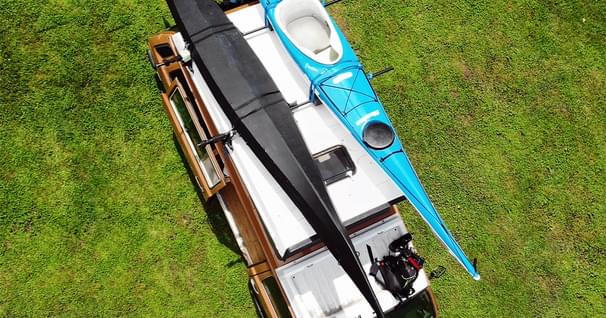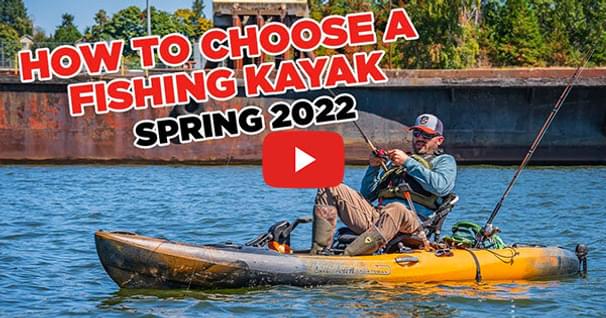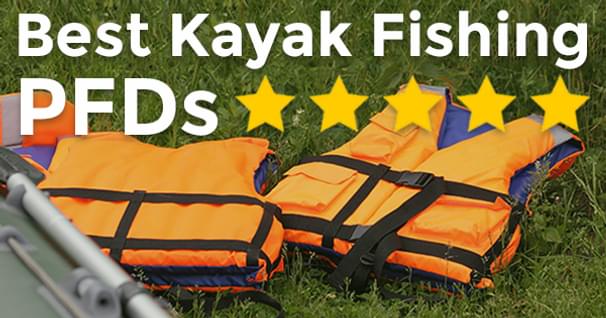A Guide to Fishing Kayak Carts
Tyler Hicks, brand ambassador for Old Town Canoe and Kayaks, shares some tips on how to choose a kayak cart for your fishing kayak. Carts are probably one of the most important pieces of equipment for moving your canoe or kayak to the water from your launch and vehicle, and back at the end of the day.
Why Carts are Important
The reason these carts are so important is that their overall aim is to reduce fatigue when moving your watercraft back and forth from the launch point to your vehicle. But also they can help prevent damage to your watercraft when transporting it. They can also reduce possibilities of injuries from strain. More importantly, they can help reduce conflict at boat ramps, especially busy boat ramps, where unloading and loading your kayak or canoe at the ramp would take up valuable space and time. Because oftentimes, it takes us a little bit longer to get prepped at the beginning of the day and get off the water at the end of the day. Having a cart will allow you to transport and launch your watercraft very quickly and not gobble up too much space at the boat ramp or alternatively it'll give you access to unimproved launches where you won't have any possibilities of conflicts with other users.
Types of Carts
Carts come in many different shapes and sizes and they reflect the different shapes and sizes of watercraft that are out there on the market. But you'll see two primary designs. One is this bunk style which works extremely well with the pontoon style hulls, sit on top kayaks, and Old Town’s Sportsman's lineup. The other cart style is saddle style, which work very well with canoes and sit-inside kayaks. Now there are two other commonly encountered cart systems out on the market. One is a scupper cart which utilizes the self draining holes or the scuppers on sit on top kayaks by locking up inside there. The other is landing gear which is a permanently mounted wheel system which typically utilizes some sort of track system that's attached to the kayak. These are not recommended for Old Town Canoes and Kayaks, as they can potentially damage the kayak.
Find all the latest and greatest Kayak Carts available. Compare options, prices, read reviews and where to buy!
Weight Capacity and Boat Shape
One thing you really do need to consider is the weight capacity of your cart. Now you need to take into account the amount of gear you might have loaded in your watercraft while you're transporting on this cart. Don’t just look at the weight of the kayak or canoe itself, but think about all that gear you're going to have loaded in there. Nearly all the major manufacturers are going to have some sort of adjustable distance on their bunks or saddles to make it easier to conform to the whole shape of your kayak or canoe. So make sure when you're looking at investing in a cart, that it has some sort of ability to adjust so that you'll have a better opportunity to create a stable platform for your watercraft to settle into.
Terrain and Wheel Types
Besides thinking about the weight and shape of your watercraft, you also have to think about the terrain that you're going to be transporting your watercraft across. The wheels on your carts are made out of primarily two materials. One is this really popular no-flat tires, which are typically made out of plastic or may have a little bit of rubber incorporated into them. And these are really great for hard compact surfaces. So looking at concrete, asphalt, compacted gravel, and grass, things like that. Whereas if you're going to be on really soft surfaces like sand, loose gravel or loose dirt, then these inflatable balloon style tires are actually a really good choice, and are going to make it far easier for you to transport your watercraft across those substrates. Oftentimes people ask which one should I go with if I only occasionally beach launch, and I always say go with the balloon because you can always use the balloon on concrete surfaces, whereas these no-flat tires don't work very well on sand. One of the advantages of these bunk style carts is that they typically have an adjustable height setting, which comes in handy when transitioning from hard tires to balloon tires. Because balloon tires have a significantly greater diameter, without the adjustability you might get some rubbing on the bottom of your watercraft. Nearly every cart is gonna come with some sort of strap system to help you secure your watercraft to your cart when moving over uneven terrain.
Setting Up Your Cart
I'm going to take a moment to give you some tips on how to set up your cart for your watercraft and I'm going to show you some examples of how I load and unload my kayak when it's loaded down with a lot of gear. Finally, I'm gonna take a few moments to discuss placement of your kayak cart and ways to reduce fatigue on you when moving your watercraft to and from your launch vehicle.
The first thing you need to do is fit your cart to your watercraft. Mini cart systems have a very simple and easy way to adjust the bunks but it will vary by manufacturer. On this Malone cart, there is just a little knob here that reduces tension on these bunks and allows them to slide back and forth. So on this Salty 120 PDL, I'm going to block these bunks in and then try and balance the cart, so that I have about equal distance on each side. And then all I have to do is tighten this up. And I'm good to go.
Now placement of your cart is absolutely critical. You want the bulk of the weight to be riding on the cart itself. That way it reduces the amount of energy you have to use when transporting your watercraft. Conveniently the best spot or the fulcrum point on most modern fishing kayaks is going to be approximately underneath the seat. This will depend on what type of gear you have in your kayak or canoe and how you have that weight in gear distributed within your watercraft. But you'll have to tinker around with this a bit but underneath the seat is a really good place to start. Now you can load your watercraft onto your cart, either from the bow or stern depending on what works best for you and the weight and design of your watercraft. But I'm going to show you both examples today. So we're going to start with from the stern. What I'm going to do is make sure I'm using the cart appropriately. Some of them are symmetrical. Some of them are asymmetrical like this one and I'm going to turn it around and line it up with where I want it to be, approximately the seat, and I'm going to point the cart slightly away from the stern. Then I'm gonna come back here and lift up and there we go. Then I can just use the strap system to secure the kayak to the cart. Alternatively, if I want to load from the bow, I'm just going to flip this around and do the opposite and have this pointing slightly away from the bow and then similarly, I would then strap it and I can move my watercraft to the launch. So even with this 85 pound kayak with a 20 pound drive on it, I have no problem moving this kayak back and forth.
Getting Your Kayak Off the Water and Into Your Cart
Now one of the most common questions I get is how to get a fully loaded heavy fishing kayak onto the cart at the end of the day. Oftentimes I'm going to have more than 100 pounds of gear in there. And for this process, I use a very simple technique which is essentially to float the kayak out into deep enough water that I can then either use my hands or my feet. I will float the kayak out and easily lift it onto the cart because I'm just looking at a few inches and then position the cart and the bunk system up underneath the kayak until it locks in just using my feet and then I'm able to pull it out. Oftentimes because these carts have a little bit of buoyancy because of their tires and design, they will float a little bit, lock in, and then once you move it up the weight of the kayak itself will compress the cart and hold it in position as you pull it back up. But you can also reach out and grab the straps and secure it that way if you're having issues with the cart sliding back and forth as you bring it out of the water.
As you can see, these carts are a critical piece of equipment to getting you and your watercraft on and off the water. They can help reduce fatigue and potentially injury to yourself. They protect your investment by reducing opportunities for damage to your watercraft, and help to reduce opportunities for conflict to arise between you and other users.
Related Articles
After lots of research, maybe some classes, maybe some demo days, or maybe after finding the right sale…
Ryan Lilly with Old Town Watercraft takes you through the different factors to consider when choosing…
As the season turns over and fall sales arrive, it’s a good time to inspect, upgrade and replace the…
Need help loading your kayak onto the roof of your vehicle? Austin Kayak and ThatBassFishingDude…




